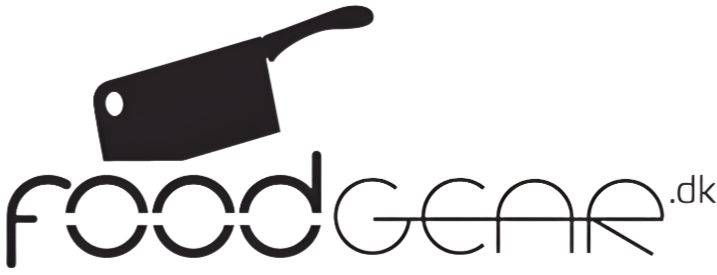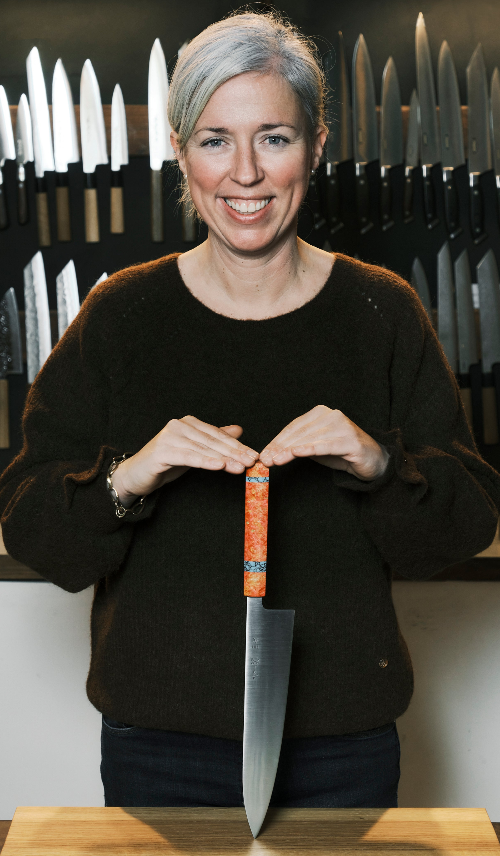Article: A tale of steel
A tale of steel
Although the title may not sound like hiding a story that will be on a level with a crime novel by Jussi Adler-Olsen, we still believe that in our industry it is important to be able to give a basic introduction - and demonstrate a knowledge - in the metallurgy which is so essential to the goods we sell.
There are thousands of knife manufacturers worldwide, and probably even more sellers, who all want to tell a story about why exactly their product is absolutely fantastic. In addition, you also see a lot of famous TV chefs who are paid to use certain knives in front of the camera, and to talk about the bliss of these knives - while the same chef in private of course uses a completely different knife. This may, to some extent, contribute to many of the incorrect perceptions that exist about knives to this day. Therefore, it is also very important to remember that although this story is primarily about steel, there are a number of other parameters that play a role in what makes a good knife. Thus, one should not see a certain type of steel as a guarantee of quality. If you are considering buying a knife, it is crucial that you can get the knife in your hand and that you can try cutting with it. Only there can you form your own impression.
In our shop, you as an employee during a working day will probably be asked the question of which knife is simply the best in the world and better than all others. It is difficult for us to answer, and none of us completely agree. Why then this disagreement, you may ask yourself? Yes, it comes from the fact that steel is not just steel - different types of steel have different properties, and that when we prepare a meal with a knife, we also have different preferences for our knives. In the following, we will discuss what steel is, what differences there are, and what meanings these differences have.
First of all, we have to deal with the word alloy. When we talk about steel types in knives, we are actually talking about steel alloys, which is probably most easily explained by the fact that we are dealing with a material that consists of different elements and here several of these elements can be metals. We can start by talking about the most basic - iron and carbon. Iron is a relatively soft material, but when carbon is added to it so that for the total mass we arrive at a content of at least 0.3%, we can categorize this material as steel - the ranges of carbon content for steel vary slightly according to the source, but it has no bearing on this review. In the vast majority of steel alloys used for knives today, a number of different elements are included, all of which have an influence on what the knife can subsequently do.
Since we primarily sell Japanese kitchen knives, it is most obvious that we start with the absolute most well-known of the classic steel alloys; aogami and shirogami .
Shirogami is also called white steel, and is typically marketed internationally under the names white-1 , white-2 or white-3 . These designations cover what is specifically included in the alloy, but here it is not that complicated. If you ignore the waste materials that will always be in a certain amount in steel (sulphur and phosphorus), then shirogami actually only consists of iron, carbon and manganese. The iron, which is the predominant element here, has a relatively small molecular size compared to the other alloy elements that exist, and this means that shirogami is the steel alloy that has the greatest potential for sharpness - and that knives in shirogami thus have the potential to become the absolutely sharpest.
Therefore, one could perhaps also be led to believe that we can end the otherwise promising story here, and conclude that knives in shirogami must be the best, as they cut best. However, as you might guess, there is a but. Iron is a relatively soft material in this context, and when it is the only metal in the alloy apart from a small amount of manganese (which, for reference, amounts to 0.2-0.3%), it means that knives in shirogami are also softer in the steel than other knives. This means that a shirogami knife cannot keep itself sharp as long as a similar knife forged from a harder alloy. One must therefore expect that a knife made of shirogami must be sharpened more often than a similar knife made of e.g. aogami or VG-10.
In addition, one can mention that shirogami falls into the category of what is called carbon steel . The name itself is a bit misleading, because there is not necessarily more carbon in a carbon steel than in a stainless alloy - which is what the name actually covers. Carbon steel rusts, and they do, because there are either no metals in the alloy other than iron, or so little of the other alloying elements that the knife is not rust-free. Iron rusts, and therefore a shirogami knife rusts quite easily. This in itself is not a problem, it just requires special attention in terms of maintenance. Shirogami-1 is potentially the hardest of the white steels with a carbon content of up to 1.35%, while shirogami-3 is the softest with a carbon content that can be as low as 0.8%. Shirogami exists, for example. in the knives from Sugimoto .
Aogami is the second group of the very classic Japanese alloys. Aogami is also called blue steel, and typically goes by the names aogami-1 , aogami-2 or aogami-super . As with shirogami, the trade names cover what exactly is included in the alloy and to what extent. In addition to iron, carbon and manganese, aogami also contains chromium and tungsten. Chromium is an extremely hard metal that is also quite resistant to rust. For the same reason, it is included in almost all steel alloys used for knives, as these are properties that are quite practical. In the specific case of aogami, however, typically only around 0.3-0.5% chromium is included, which is not enough to make the knife rust-free. However, it helps to make the knife harder than shirogami typically is, which for some is a more desirable feature - especially because a good knife in aogami can easily have cutting properties on par with a knife in shirogami. Try e.g. our bunka from Keiichi Fujii , and you won't be in any doubt!
Tungsten is also included in aogami. It is a metal that, in its distribution, is probably mostly known for being used for the ball in ballpoint pens and as an electrode in certain welding devices. It is a hard and very "dense" metal with an insanely high melting point, and it helps add some toughness to aogami, because you typically harden aogami to a relatively high hardness. All other things being equal, higher hardness gives sharpness for longer, but it also gives a more fragile knife. The metal simply becomes brittle like glass when it becomes very hard - here we are talking on the Rockwell scale perhaps 64-65 HRC or more - and tungsten thus alleviates the fragility a little. However, it is still important to remember that you really have to take care of your knife and think about what you are cutting into if you use a blue steel knife.
Aogami is a carbon steel , and you can therefore expect it to patina and rust. Aogami-Super is the hardest of the blue steels, as both the carbon and tungsten content is highest here. For carbon, the content is up to 1.5% and for tungsten up to 2.5%. The softest blue steel is aogami-2, where the carbon content is between 1.05-1.15% and where the tungsten content can be as low as 1%. Aogami-2 isn't necessarily very soft though! We are still talking about a steel alloy where a knife edge can be hardened to 64-65 HRC.
In our shop we now have a larger selection of knives in aogami . It includes e.g. the now iconic Fujii knives , Moritaka and newest player on the team - Yamawaki from Sakai.
We must now move a little away from carbon steel and on to the high-alloyed steels - put in a slightly different way, everything will be stainless from now on.
An absolute favorite of at least the employee who writes the article here is the steel alloy "gin" , which means silver in Japanese. There is no silver in the alloy, and the steel type is probably best known under the name ginsan , which actually means gin-3. In addition to iron and carbon, ginsan consists of chromium, but now to the extent of 13-14.5%, which is enough to make the knife rust-free - preserved, you can easily get a knife in ginsan to rust, if you otherwise treat it bad enough. Chromium is a somewhat larger molecule than iron, and this affects the potential for sharpness. If you imagine that you had to build a pyramid of Lego bricks, then it is clear that we can build the sharpest pyramid with the smallest bricks. It is the same with the elements in the steel alloy, and therefore ginsan does not become quite as sharp as shirogami or aogami. A steel type that is immensely similar to Ginsan is SLD. A steel alloy that you quite often encounter, and the minimal difference lies in the amount of chromium, i.e. a difference from 13-14.5% to 11-13% and a small amount of molybdenum and vanadium.
SLD comes very close, and on a knife with good blade geometry the difference is practically marginal. For the same reason, it is a very popular knife steel because it can become so sharp without rusting, which makes knives in SLD quite easy in terms of maintenance. The most popular knives in SLD are probably from Konosuke in Sakai with their GS+ series. Here, in particular, their utility knife is completely unsurpassed. SLD contains 0.9-1.1% carbon and therefore rarely becomes insanely hard. Expect a hardness of between 61-62 HRC. It is quite excellent for both professional and domestic use - and moreover, the cutting experience, as always, also depends on the geometry of the knife blade and, in particular, its thickness.
VG-10 (Vanadium Gold 10) is probably the designation that most people have come across if they have read about one or another knife in the advertisements for "Japanese" inspired knives that are increasingly presented everywhere. VG-10 is widely used and for good reason, because if a knife manufacturer manages to work sensibly with VG-10, it typically results in an excellent knife. VG-10 is, if anything, a highly alloyed steel, because it contains iron, carbon, chromium, molybdenum, vanadium, cobalt and manganese.
If we start from the end with what these "ingredients" have for the alloy, then you can roughly call molybdenum a substitute for tungsten. Tungsten is very expensive compared to molybdenum, but their properties are roughly equivalent. However, molybdenum is not quite as dense, and this means that a knife in a VG alloy will not be able to be sharpened quite as finely as shirogami, aogami or ginsan. Another new element in our story is the metal vanadium, which is included in VG because of its ability to counteract the effects of wear - vanadium is included, for example. largely in tool steel. Knives with steel of a VG alloy simply have the potential to be more durable - however, it is important to emphasize here that, like everything in life, it is relative. You should definitely not think that a knife can cut everything just because VG is slightly more durable than something particularly fragile such as aogami.
The VG alloys also contain cobalt, which for most people is probably best known for its blue colour. When cobalt is included as an element in a steel alloy, it will typically increase rust resistance and durability. The last ingredient on the list here was manganese, and you may have just noticed that manganese is included in all of the steel alloys we have gone through. Manganese's role is simply to make the steel "workable", especially at high temperatures - and that is commendable when forging knives.
VG-10 contains 0.95-1.05% carbon and knives with this steel alloy typically have a hardness of 60-62 HRC. Some of our best and most popular stainless steel knives are the KAI Shun knives, which include the iconic Shun Classic and Shun Premier series, both forged with VG-10 cores . Another interesting manufacturer is Tawa , who is based in Osaka.
Our knives from Tawa are damascus forged according to the san-mai method. This means that the knife is forged in layers, where the middle layer is called the core steel, which here is VG-10. Softer pieces of steel are folded around the core steel, thus protecting the core. A knife will never improve from being forged in many layers, but it can be aesthetically very beautiful. A skilled knife maker manages to make a knife in many layers - e.g. up to 65, while the blade is still generally thin. It's a difficult balance to find, but the knives from Tawa demonstrate this to perfection.
Finally, we can mention powder steel, which is a broad category that includes alloys with names such as SG-2 (R2) , ZDP-189 or HAP40 . Knives with steel of these alloys are typically at the more expensive end of the spectrum, and this is because the powder steels are simply more complicated to manufacture and therefore more expensive for the knife makers to use. For the powder steels, it also applies that there is actually quite a big difference in which elements and to what extent these are included. For reference, it can be mentioned that 1.25-1.45% carbon is included in SG-2, while it is as much as 3% in ZDP-189.
Most of the mentioned elements from VG-10 are included in the powder steels, just to a greater extent. When there is great variation in how much of the various elements are included in the powder steels, it may seem strange that they are categorized under one. That it is done anyway is due to the way the steel is produced. A challenge that is typically encountered when producing high-alloy steel is to ensure that the various alloying elements are evenly distributed in the mass. This is no problem as long as the mass is liquid, but as soon as the steel cools and becomes solid, various elements can have a tendency to "clump together", which means that you potentially do not have the desired properties everywhere in your finished product.
This can be accommodated by shooting the liquid steel through a fine nozzle, after which it is immediately cooled. The steel now appears as a powder in which there is a perfectly even distribution of all elements right down to the particle level. The powder is then heated to a temperature where it can be forged - it is therefore red hot, but not liquid. To ensure even distribution, it is then pressed into ingots by giving it a very high and equal pressure from all sides. This of course gives a delicious and uniform product, but it is also extremely expensive. Powder steel can be hardened to hardnesses that can be as high as 67 HRC, which in practice makes it very difficult to grind for most people. Of course, we also have knives in powder steel - e.g. from Itou, but you have to visit us in the store to see them.
This was a longer write-up about the absolute most common steel alloys used in Japanese knives. If you've managed to struggle all the way through this text, then hopefully you've got a better idea of what steel actually is and why it can be difficult to claim that one type of steel is better than another. The best thing is to try a given knife yourself in order to form an idea of its cutting properties.




Leave a comment
This site is protected by hCaptcha and the hCaptcha Privacy Policy and Terms of Service apply.